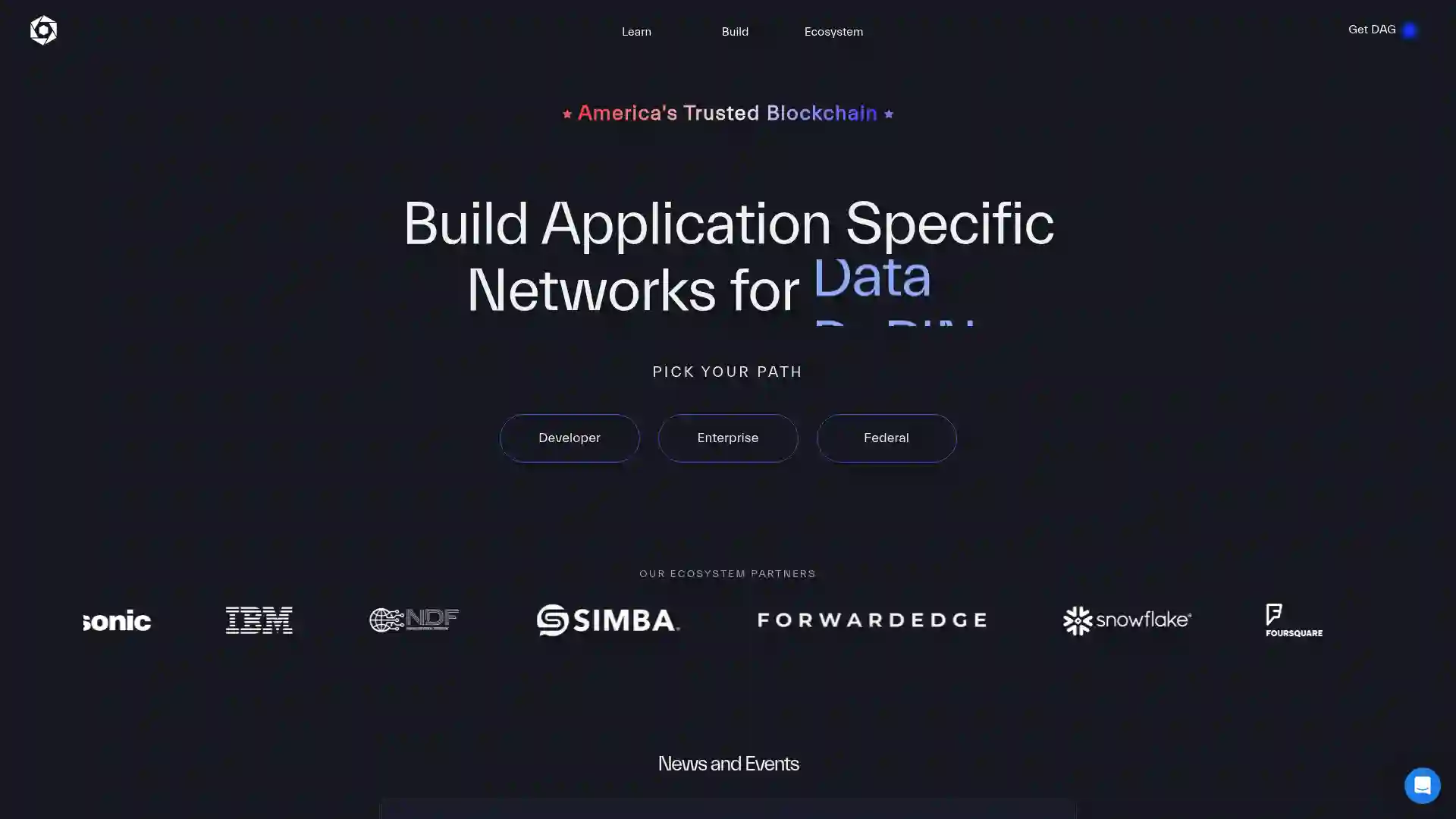Constellation (DAG)
Constellation DAG is a unique approach to decentralized networks, drawing inspiration from traditional blockchain systems while overcoming some of their inherent limitations. Unlike conventional blockchains, Constellation implements a Directed Acyclic Graph (DAG) structure, which enables it to scale more efficiently as more nodes join the network. This article aims to provide an in-depth understanding of Constellation DAG, its architecture, and its applications.
Understanding DAG in Constellation
The concept of DAG

| Ticker | DAG |
| Category | Smart Contract Platform |
| Website | https://constellationnetwork.io/ |
| @conste11ation | |
| Telegram | constellationcommunity |
| https://www.reddit.com/r/constellation/ |
A Directed Acyclic Graph (DAG) is a data structure that comprises nodes and edges, where each edge has a direction, and no cycles exist. In the context of decentralized networks, DAG allows for a more scalable solution compared to traditional blockchains by enabling parallel processing of transactions. This structure eliminates the bottleneck associated with linear chain validation, allowing for increased throughput and lower latency.
How Constellation utilizes DAG
Constellation employs DAG to facilitate a decentralized network that scales horizontally. In simple terms, as more nodes (participants) join the network, the capacity of the network increases, akin to a potluck party where each guest contributes resources. This approach contrasts with traditional blockchains where scalability is limited by the resources of the host. By leveraging DAG, Constellation ensures that the network can accommodate a growing number of transactions without compromising on efficiency.
The architecture of Constellation DAG
Microservices approach
Constellation DAG utilizes a microservices architecture, which involves developing an application as a suite of modular services. Each microservice in Constellation contributes to specific business goals and communicates with other services through well-defined interfaces. This architectural style enhances the flexibility and maintainability of the network, allowing for seamless integration and upgrades of individual modules without disrupting the entire system.
Benefits of microservices in Constellation
The microservices approach in Constellation offers numerous benefits, including improved scalability, fault isolation, and technology diversity. By breaking down the network into smaller, independently deployable services, Constellation can scale each component according to its specific needs. This modularity also aids in isolating faults, ensuring that issues in one microservice do not affect the entire network. Furthermore, microservices allow for the use of various technologies and programming languages, promoting innovation and adaptability.
Applications and use cases
Enhanced scalability for decentralized applications
Constellation DAG is particularly well-suited for applications requiring high scalability and throughput. By overcoming the limitations of traditional blockchains, Constellation enables developers to build decentralized applications (dApps) that can handle a large number of transactions without performance degradation. This is especially beneficial for industries such as finance, supply chain, and IoT, where real-time data processing is crucial.
Facilitating complex data interactions
The architecture of Constellation makes it ideal for complex data interactions across various platforms. Its ability to integrate diverse data sources and process large datasets in parallel positions it as a powerful tool for enterprises looking to leverage blockchain technology for data-intensive applications.
